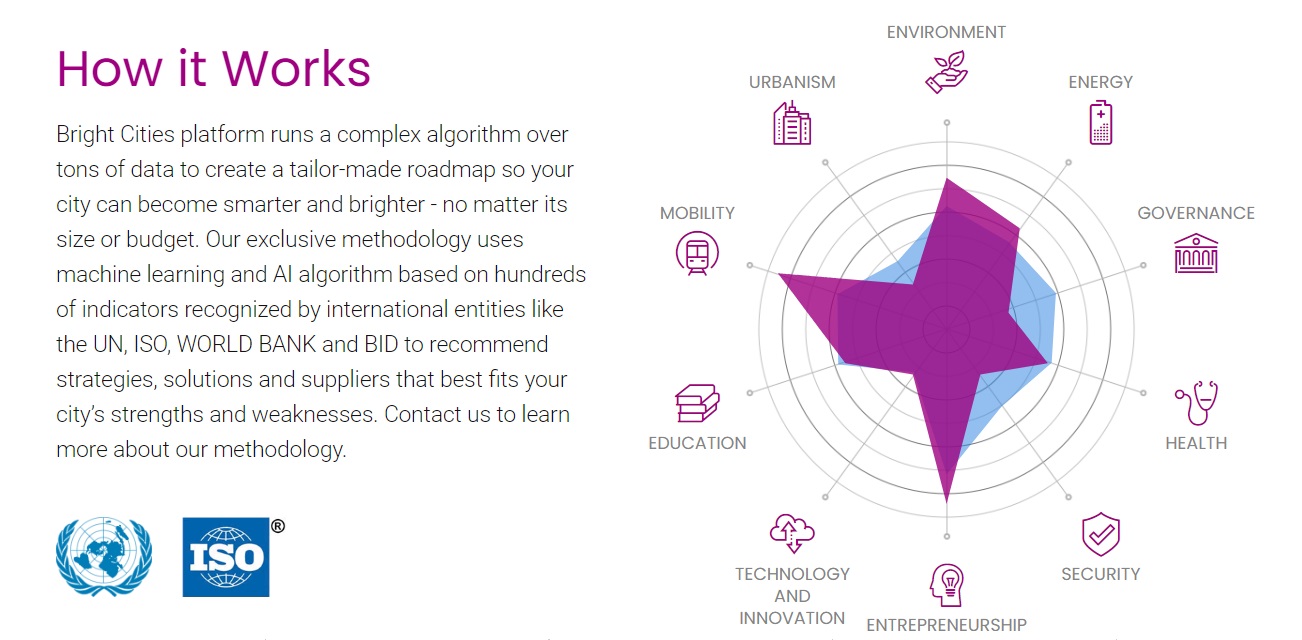Conserve and sustainably use the oceans, seas and marine resources for sustainable development is the fourteenth goal of the 2030 Agenda for Sustainable Development

⠀⠀⠀⠀⠀⠀⠀⠀
It was in the oceans that the first life on Earth appeared and, since then, we have not stopped a minute to depend on its resources. Rain, drinking water, climate, corals, food and even oxygen: everything is provided or regulated by our large marine ecosystem.
With the alarming advances of global warming, the oceans have become the main targets of climate change and are now feeling their environmental impacts up close. This year we reached the highest temperature ever recorded in the oceans, with an increase of 0.075 °C above the average temperature recorded between 1981 and 2010. The increase, which may seem small, actually corresponds to the energy released by 3.6 billion Hiroshima bombs.
The reason for this increase? Human action. According to scientists, 90% of all the heat generated by greenhouse gases since 1970 ended up in the ocean, while only 4% in the same period went into the atmosphere. Global warming, our biggest environmental challenge today, was rightly included in the UN 2030 Agenda for Sustainable Development due to its gravity: it was established as SDG 13 – Action against global climate change, whose mission is “to take urgent measures to combat climate change and its impacts“.
Fortunately, the oceans were not left out. Established as the next goal, SDG 14 – Life below water aims to “conserve and sustainably use the oceans, seas and marine resources”, thus giving the right importance to the preservation of this ecosystem. The goal covers a series of issues inherent to water life, such as marine biodiversity, ocean acidification, spills, discharge of water into the oceans and health of coastal areas.
The last two examples make it even more clear why we must talk about cities when we approach marine life. After all, the pollution that reaches the oceans today should mean that, by 2050, there will be more plastic than fish in marine waters in 2050. The source of so much garbage is known: even if they are not coastal, our cities – and the incorrect way they dispose their waste – deteriorate water resources such as rivers, whose final destination is the ocean.
It is the duty of the municipalities, therefore, to ensure adequate basic sanitation, avoiding that sewage networks and industrial waste are erroneously dumped. The same goes for the disposal of solid waste, recycling programs, drinking water service and, of course, awareness programs. As the government level closest to the population, cities need to transform the way their population uses and consumes natural resources, including water – a theme that is also addressed in SDG 12 – Responsible consumption and production.
To Bright Cities, talking about these issues has always been a fundamental pillar for building better cities. It is no coincidence that, among the ten urban areas analyzed by our platform, we included the environment to reinforce the importance of sustainable policies for urban management. As an expert in Smart Cities, we know that taking care of our water resources and the environment is about preserving the health, economy and safety of a city. A smart city always prioritizes socio-environmental policies to guarantee the quality of life of its population.
But how can the seas affect cities? First, we can mention pollution, which directly impacts marine life and its entire production chain. As the UN says, the oceans absorb about 30% of anthropogenic carbon dioxide emitted, which is why they are becoming more acidic and risking the lives of millions of living beings. In coastal cities, where fishing is part of the residents’ diet and is one of the main economic activities, the death of millions of living beings can directly impact a city’s income, economy and wealth, going against the goals established by the SDG 2 – Zero Hunger and SDG 8 – Decent work and economic growth.
It is also worth mentioning the risks of this pollution for human beings. There are many diseases and parasitic infections caused by water contamination, which also prevent cities and countries from reaching the targets set by SDG 6 – Clean Water and Sanitation and by SDG 3 – Good Health and Well-being.
For coastal cities, talking about the oceans is even more urgent as it affects their very existence, which may disappear from the map if global warming continues to happen: some of the data reported by the UN state that the sea level has risen about 20 cm since 1880 and should increase another 30-122 cm by 2100.
How can we stop this scenario? Whether through environmental protection measures or sustainable resource management, cities are responsible for preserving their water networks – such as seas, in the case of coastal municipalities, or rivers, which directly affect the quality of salt water. Knowing this, Bright Cities offers with its platform an easy and quick way for public managers to diagnose the efficiency of their services and find the best solutions to solve them.
Our platform transform cities into Smart Cities using disruptive technology, which performs a complete diagnosis of the municipality based on 160 international indicators, 21 of which are related to the environment. We listed some of them below to tell you why they are an important tool to identify, evaluate and guide cities towards SDG 14- Life in the water:
- Indicators “Percentage of solid waste recycled”: the data collected by the indicator reveal the municipality’s ability to properly handle and treat its waste to prevent damage to the ecosystem, such as eventual dumping into the oceans. Thus, managers are able to create more precise policies to achieve the target 14.1 of SDG 14: “By 2025, prevent and significantly reduce marine pollution of all kinds, in particular from land-based activities, including marine debris and nutrient pollution“;
- Indicators “Percentage of houses with access to a sewage system” and “Percentage of sewage that does not receive treatment”: these indicators show the proportion of families in a given city with or without access to sanitation services. With this data, municipalities are able to more accurately evaluate whether their residents are dumping their waste into the seas, thus preventing the city from reaching the target 14.1 of SDG 14: “By 2025, prevent and significantly reduce marine pollution of all kinds, in particular from land-based activities, including marine debris and nutrient pollution“;
- Indicator “Total percentage of energy from renewable sources”: we know that global warming is directly associated with the health of the oceans. For this reason, avoiding the burning of fossil fuels and using cleaner energy is necessary to achieve the target 14.3 of SDG 14: “Minimize and address the impacts of ocean acidification, including through enhanced scientific cooperation at all levels“.

Based on these indicators, a city and its managers are able to identify which urban areas have problems, map the populations that still lack public services, dimension the investments necessary to generate changes and, in some cases, even identify which data still need to be collected for an in-depth analysis of the municipality.
Using this diagnosis, carried out by Bright Cities platform, a city can start the next step to become smarter: investing in technology and innovation. For this, we carry out for each municipality a complete and exclusive roadmap with suggestions for smart solutions to improve its urban problems. The choices take into account the costs, schedules and scale of the suggested initiatives, and are chosen by mapping our database of smart solutions and good practices, which already includes more than 1,000 initiatives – it is today the largest in the world in the subject! In the environmental area, more than 150 solutions are available for consultation.
One of the solutions included in our database and which has a positive impact on the water resources of a city is ACLIMA, a platform that provides information about the air population and intelligence of climatic data. With the tool, governments, companies, researchers and the public can see and track pollution hotspots and impacts over time — from traffic congestion to gas leaks and wildfire.
For those who prefer to take precautions, another interesting solution is the climate risk software developed by IDA. The solution provides insurance companies with an automatic tool to individuate, monitor and estimate climate risks for the areas in which they have interest. It can be used also by all the actors in the chain: citizen, administrations, farmers, banks, seed suppliers and cooperatives.
Another interesting initiative focused on the environment and the preservation of marine resources is Copernicus, the European Union’s Earth Observation and Monitoring Program. It collects environmental data from satellites and sensors on Earth to deliver the information in a full, free and open way. The programme contributes to making the EU a stronger world player in terms of its role in economic development, digital economy and security.
Solutions like these are increasingly important to reverse the worrying damage we have caused on the planet, especially in the seas. Proof of this is that not only are the oceans getting warmer, but the speed of this warming is also increasing every day. According to the most recent report by the Intergovernmental Panel on Climate Change, while the sea level rose by about 15 cm during the 20th century, it currently rises twice as fast – about 3.6 mm per year.
Some other data mentioned by the UN inrecent reports only reaffirm that life under water is in great danger. Among them we can highlight:
- Worldwide, the market value of marine and coastal resources and industries is 3 trillion dollars a year, or about 5% of global GDP;
- Marine fishing directly or indirectly employs more than 200 million people. However, fish catch levels are close to the production capacity of the oceans, with 80 million tons of fish being caught;
- 40% of the world’s oceans are highly affected by human activities, including pollution, decreased fishing and loss of coastal habitats;
- The ocean absorbed more than 90% of the excess heat from the climate system;
- Coastal waters are deteriorating due to pollution and eutrophication. Without efforts, coastal eutrophication is expected to increase by 20% in large marine ecosystems by 2050;
- About 680 million people live in coastal areas – and it is expected to increase to one billion by 2050;

⠀⠀⠀⠀⠀⠀⠀⠀
The careful management of this global resource is essential to guarantee the planet’s future – and our cities’. With coronavirus, the UN has warned countries around the world not to reduce the attention given to the SDG. On the contrary, according to UNESCO, the ocean can be an ally against COVID-19: the bacteria found in the depths of marine waters are used to perform rapid tests to detect the presence of COVID-19. In addition, the diversity of species found in the ocean holds great promise for pharmaceutical products.
In the Brazilian scenario, the importance of marine resources is indisputable. The country has a coastline of 10,800 km in length, where 395 municipalities and 17 states are located. It is where almost a quarter of the population lives, in a unique ecosystem with 3,000 kilometers of coral reefs and 12% of the world’s mangroves. Also, according to data from 2010, collected by the extinct Ministry of Fisheries and Aquaculture (MPA), 1 million and 240 thousand tons of fish were collected per year, 45% of this from artisanal fishing.
The power that our cities have in hand to ensure the security and preservation of this rich ecosystem is enormous, and there are many actions that we can take to achieve the SDG 14. In a Smart City, sustainable policies are a priority in urban management, and include measures such as:
- Contribute to the development of waste management and sewage distribution technologies that minimize damage to water resources;
- Prohibit practices that place marine species and resources at risk;
- Track the life cycle of products and materials to understand how they are disposed;
- Substitute, limit or prohibit the use of certain chemicals, additives or materials that can affect marine ecosystems;
Bright Cities believes that any city can become a smart city and adopt ecologically responsible policies like those listed above. Regardless of the scale or the urgency of the problem, our platform has the ideal solution to help municipalities face their main urban challenges.
Always working in partnership with mayors and public agencies, we encourage concrete actions towards the goals of the SDGs and intensify the collection and use of data for decision making. To learn more about our work, check out the special content we have prepared presenting the platform. Here, on our News Platform, you also can check out the special content about the SDGs, where we cover all the 17 Goals and tell you what smart solutions there are for them!
Bright Cities is a disruptive platform to diagnose your city itinerary so it becomes smarter every day. Upgrade your city!



